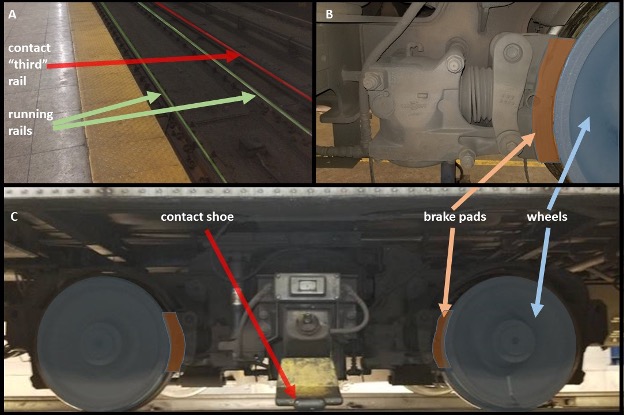A team of University of Toronto researchers, led by Professor Greg Evans (ISTEP, ChemE) and Keith Van Ryswyk (ChemE PhD 2T3), is working to better understand the sources of air pollution in the Toronto Transit Commission (TTC) subway system — an important first step towards improving its indoor air quality.
The new study, published in Transportation Research Part D: Transport and Environment, and executed in collaboration with Health Canada, is a continuation of research published in 2021. The earlier study identified that the concentration of particulate matter in 2018 had increased in the TTC’s Line 2 along Bloor-Danforth; while Line 1 along Yonge-University saw a drop in emissions.
“In this new paper, we looked at what could be done to improve this situation,” says Evans. “But to do that, we first needed to understand where the particulate matter is coming from.”
Particulate matter, also known as PM2.5, are fine particles of airborne solids or liquids that are smaller than 2.5 micrometres per cubic metre of air. To identify the sources in the subway, the researchers measured the chemical composition of the particulate matter and then coupled this with modelling. This revealed that most of the particulate pollution was coming from the wheels and rails when brakes were applied.
“Our early results pointed to the brake pads themselves as being the major cause of the emissions. However, we were surprised to find that the main source of this indoor air pollution is wear of wheels and rails during braking rather than coming from the brake pads,” says Evans. “The amount of wear is influenced by the degree of braking applied, that is, how quickly the trains come into the station.
“We can’t replace the wheels and rails across the entire system, but if we can change the way that drivers apply the brakes, so they aren’t hit as hard or as often, that offers an interim way to reduce the emissions.”
The braking technology itself also greatly influences emissions. Particulate matter concentration is higher on Line 2, which uses older trains that are nearing the end of their 30-year design life cycle and reduce speed through regenerative and friction braking. Line 1 has a fleet of newer trains that mostly use regenerative braking to convert the train’s energy back into electricity.
“On Line 1, the braking is mostly regenerative, which involves no direct physical friction contact between the brake materials themselves,” says Evans. “They are also putting in automatic train control on Line 1, a system where braking is automated, which further reduces friction braking. These are all positive steps, but Line 2 has not benefitted from these changes yet.”

While the adverse health effects of outdoor particulate matter have been well established, the consequences of inhaling particles in subways are not as clear.
“The particulate matter in the subway is actually very different from what we find in ambient, outdoor pollution,” Evans says. “It’s very metal rich and mostly made up of iron. So, there is good reason to think that it may be more hazardous.”
Beyond reducing emissions, improving ventilation is the second way to improve air quality on subway trains and platforms.
Subway systems in cities such as Montreal and Barcelona use continuous mechanical ventilation for cooling, which also results in lower levels of particulate pollutant concentrations. But Toronto’s system uses limited forced ventilation, says Evans.
“It really relies on trains pushing the air like a piston as they go through the tunnels. And eventually the trains come to an open area, where the train goes outside and pushes the contaminated air out with it, which is what provides most of the ventilation,” he says.
Evans hopes these new findings will not only accelerate the technological changes needed to improve the indoor air quality on Line 2, but also influence the plans for the new subway lines in Toronto, such as the Ontario Line, and support the design of subways in other cities across the globe.
“We hope this work will help design better subway lines given that so much valuable work is going into creating better transit systems,” says Evans.
“Good transit is central to both decarbonization and the smooth operation of modern cities. It’s important for transit systems like subways to provide a healthy environment rather than expect passengers themselves to take precautionary steps in response to poor air quality.”





